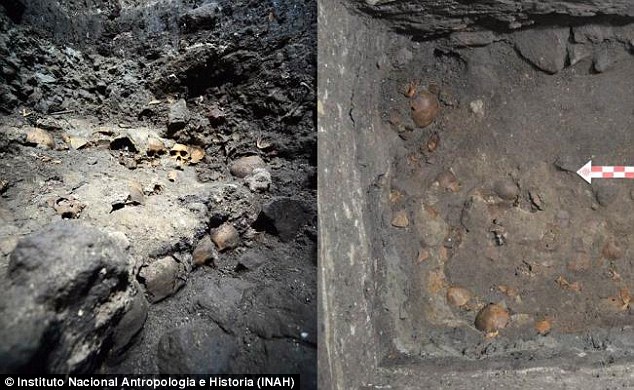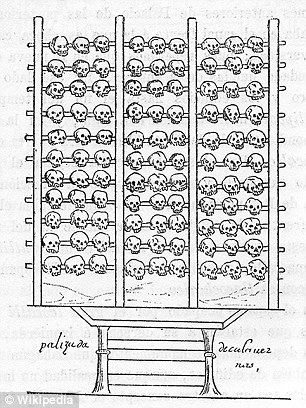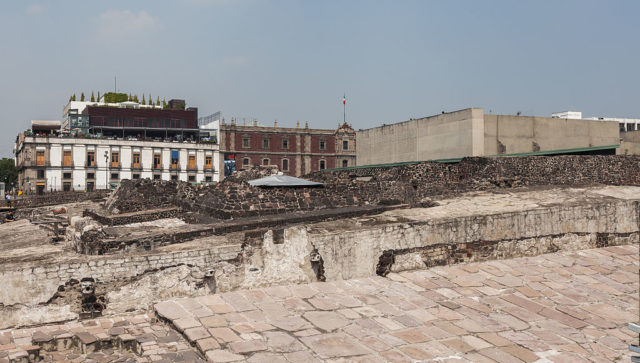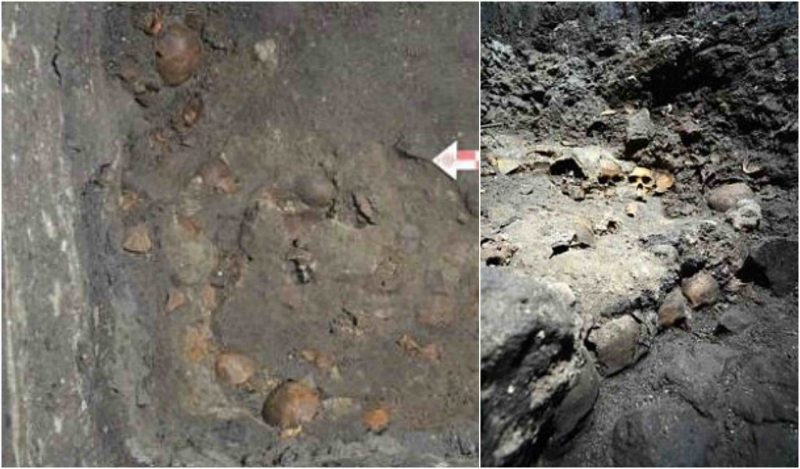A trophy rack entirely made out of human skulls have been found buried in Mexico’s famous Templo Mayor; an archaeological site from the Aztec era. These bizarre abacus-like racks came in many shapes and sizes were created by the Aztecs using the skulls of the people who were sacrificed during the legendary ‘top of the temple’ slaughter ceremonies. Known as ‘Tzompantli’, the structures of the racks were made out of wooden poles which were then pushed through the sides of the skulls in equal numbers from top to bottom.

The Aztecs revered their rituals, some more bizarre and barbaric than others, most notably the sacrificial ritual that mostly took place on top of a religious temple in the presence of five or six high standing priests.
The victims were taken to the top of the temple, where four priests held them firmly with their heads on a stone slab. The fifth priest, the most skilful out of all others, would then mercilessly start carving the body from the stomach all the way to the diaphragm. Then in an act of sheer barbarism, he would carve out the heart and raise it high above his head, it often still beating with some life left in it, to the amazement of thousands gather to witness the rituals. The heart of the victim would then be kept in a sacred bowl, and the body thrown down the stairs of the temple as a final gesture of the completion of sacrifice and the ritual. Often the neighbouring rulers, friendly and rivals alike, were invited to witness the sacred rituals, presumably to psychologically manipulate them into a constant state of fear and submission.

A significant amount of research has already been carried out over the last four decades or so in order to better understand the skull racks and the rituals that produced these skulls. The skulls are often arranged in a way that all heads are made to look towards the center; no one really knows yet what lied in the middle or why.
The archaeologist and expert on Aztec customs Raul Barrera said that recent discovery in Templo Mayor in Mexico revealed a set of 35 skulls, while an unknown number of other skulls are still buried under the layers. Hence the size of the rack is yet to be determined. Templo Mayor, meaning Grand temple in Spanish, is one of the main historic sites in the Aztec city Tenochtitlan. Tenochtitlan was the capital of the Aztecs, and at the time it was discovered Tenochtitlan covered an area larger than any European major city. The discovery was made during a painstaking dig between February to June last year. The site is situated under a colonial-era house; the archaeologists had to work under extreme conditions in the wells under the house which itself is considered to be a historic site.

Archaeologist Susan Gillespie, who is not the part of the project but has worked on the Aztecs before, suggested that sacrificial rituals were rampant in the antiquity, some more bizarre and bloody than others. However, Says Gillespie, using the skulls of sacrificed people to form mortared trophies is unlike the widely accepted over the top religiosity of the ancients. She added that this one aspect of the Aztec culture, shocking as it is, shows how little we understand about the mindset of the ancient Aztecs, and how they perceived such violent rituals. Gillespie also pointed towards the fact that there have also been some discoveries of similar racks, made using complete heads instead of just the skulls, which is even more mind-boggling for those trying to understand the ancient culture and their customs.
